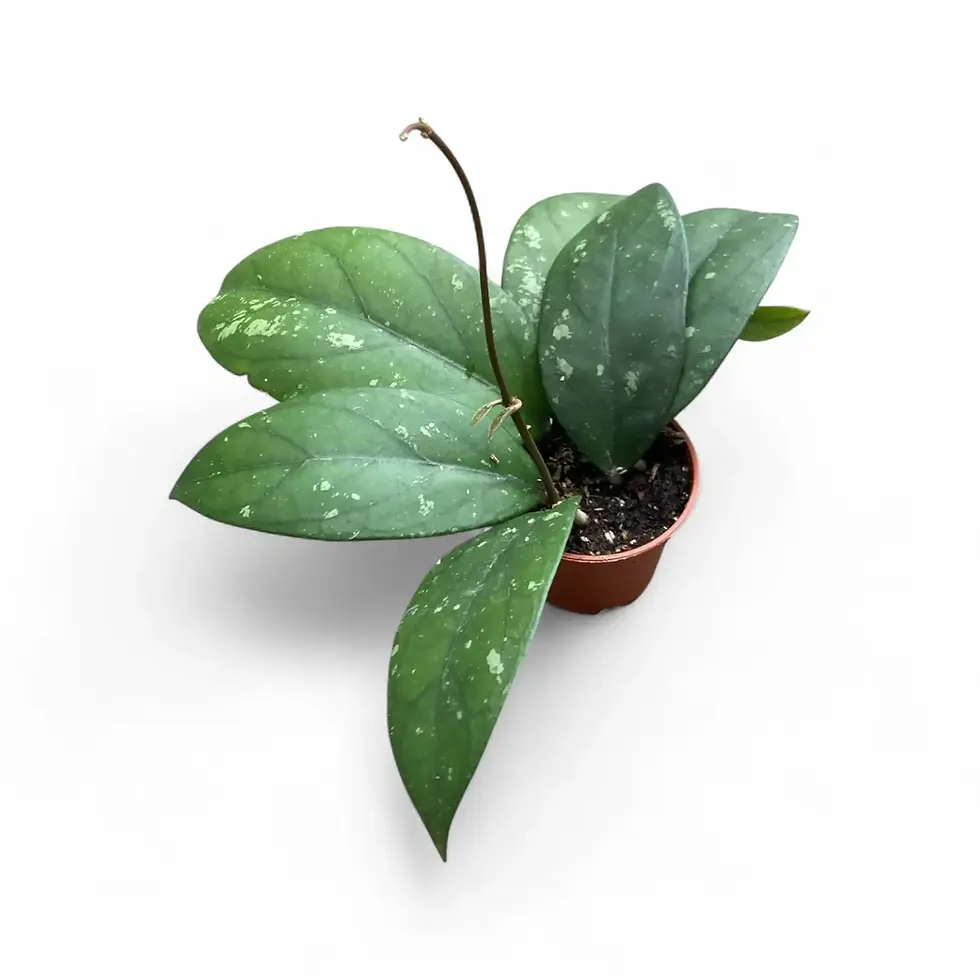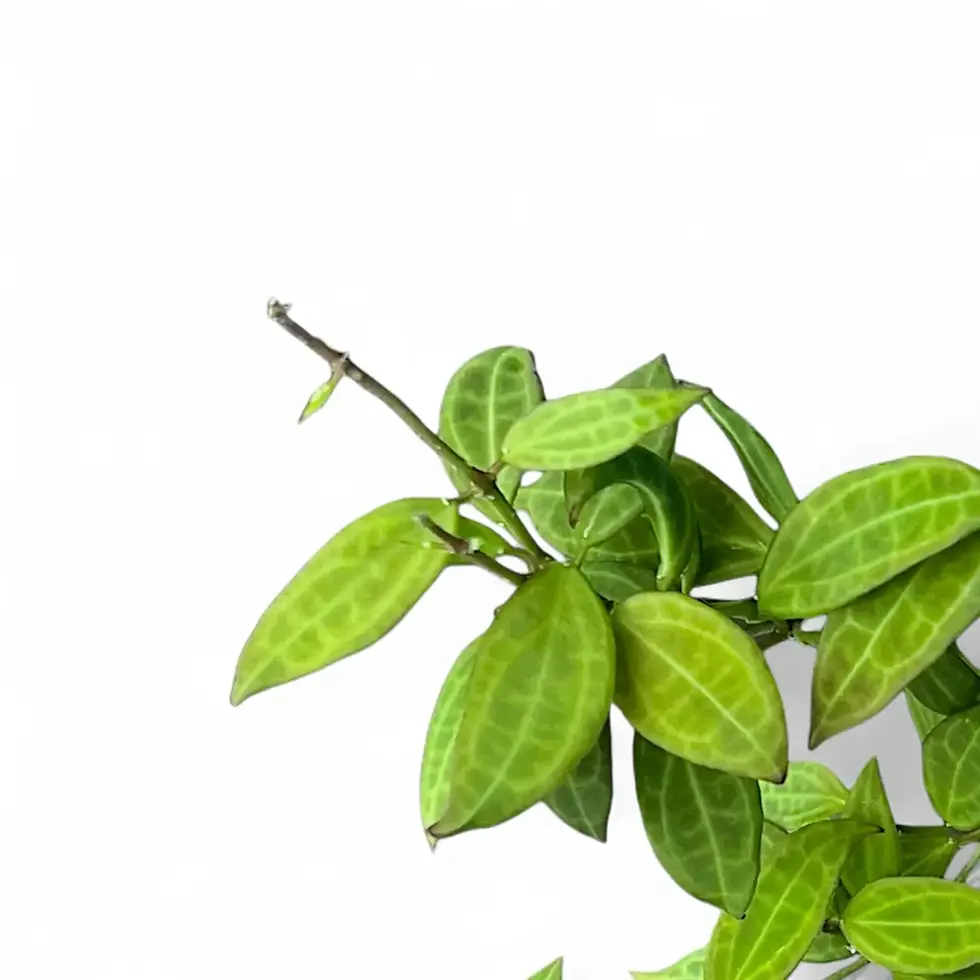Alocasia 'Serendipity' – Rare Dark Beauty with a Unique Story
Alocasia 'Serendipity' isn’t just another tropical plant—it’s a collector’s dream discovered by chance. Hybridizer LariAnn Garner found this plant at a small nursery labeled simply as “Alocasia Black Stem.” Unlike any known variety, it had broad, glossy leaves with a rich bronze sheen on both sides, dark petioles, and an unusual velvety fuzz underneath. Its slightly puckered texture and deep metallic tones make it one of the most striking modern Alocasias ever introduced. Propagated through tissue culture in 2015, 'Serendipity' quickly earned a reputation among enthusiasts as a rare, must-have centerpiece for any advanced aroid collection.
Key Highlights of Alocasia 'Serendipity'
- Distinctive Color: Both leaf surfaces shimmer with reddish-bronze tones, supported by deep black petioles.
- Unique Texture: Slightly bullate, sculptural foliage with a fine layer of soft fuzz underneath.
- Indoor Size: Grows upright to 80–130 cm; mature leaves reach up to 50 cm long.
- Inflorescence: Morphology suggests a relationship to the macrorrhizos group, not sarawakensis.
- Variegation: Unconfirmed pink and white forms occasionally appear in trade but remain rare.
Where Alocasia 'Serendipity' Likely Comes From
Its exact wild origin is unknown, but close relatives like Alocasia sarawakensis and A. alba grow in Southeast Asia’s humid forests. These regions feature steady warmth (18–30 °C), rainfall above 1500 mm, and bright, filtered light. Indoors, mimic these stable tropical conditions for best results. Like all Alocasias, this plant contains calcium oxalate crystals and is toxic to pets and humans if ingested.
How to Grow Alocasia 'Serendipity' Successfully
- Light: Bright, indirect light keeps its bronze sheen vivid; avoid intense direct sun.
- Water: Maintain evenly moist soil, but let the top 2–3 cm dry slightly between waterings.
- Humidity: Aim for 60–80%; extended dryness can lead to crisping edges.
- Temperature: Best range is 18–27 °C; protect from cold drafts or sudden drops.
- Soil: Use a chunky, well-aerated mix with organic matter, perlite, and bark for drainage.
- Fertilizer: Feed every 2–3 weeks with a balanced liquid fertilizer during active growth.
- Repotting: Every 1–2 years or when roots fill the pot; choose a stable container with drainage holes.
- Propagation: Divide rhizomes carefully; each piece must have roots and a growth point.
- Semi-Hydro: Adapts well to mineral substrates with consistent monitoring.
- Dormancy Note: Growth may slow in cooler months; reduce watering slightly and avoid overfeeding.
Problems You Might Encounter (and Fix)
- Yellowing Leaves: Usually from overwatering; improve drainage and allow slight drying between waterings.
- Browning Tips: Often caused by low humidity or salt buildup; flush soil and boost moisture.
- Pest Risks: Watch for spider mites, thrips, and mealybugs; treat early with neem oil or insecticidal soap.
- Limp Growth: Linked to inconsistent watering or root stress; inspect roots and adjust care.
What Makes 'Serendipity' So Collectible
Few plants carry a discovery story like this one. Named for the happy accident that brought it to light, 'Serendipity' combines bold form with rich, metallic tones that remain stable under the right care. For serious collectors, it’s an opportunity to grow a plant that feels both modern and mysterious—a unique chapter in Alocasia history.
Etymology and Background
The genus name Alocasia comes from a modification of Colocasia, its close relative. The name 'Serendipity' reflects the way hybridizer LariAnn Garner stumbled upon this plant unexpectedly. Official production began in 2015, introducing an entirely new aesthetic to the Alocasia world.
Questions Plant Collectors Ask
- Is Alocasia 'Serendipity' really rare? Yes—tissue-cultured plants are limited, and true-to-type forms remain uncommon.
- Why does it have a bronze tone instead of green? Its pigmentation is natural and stable, linked to its unique parentage and morphology.
- Can it tolerate lower light? No, it needs bright, filtered light to maintain vigor and color depth.
Bring home Alocasia 'Serendipity' today and add this extraordinary dark-leaf aroid to your collection!
Alocasia 'Serendipity'
Alocasia ‘Serendipity’ comes in a ⌀ 12 cm pot and is approximately 25 cm tall
































